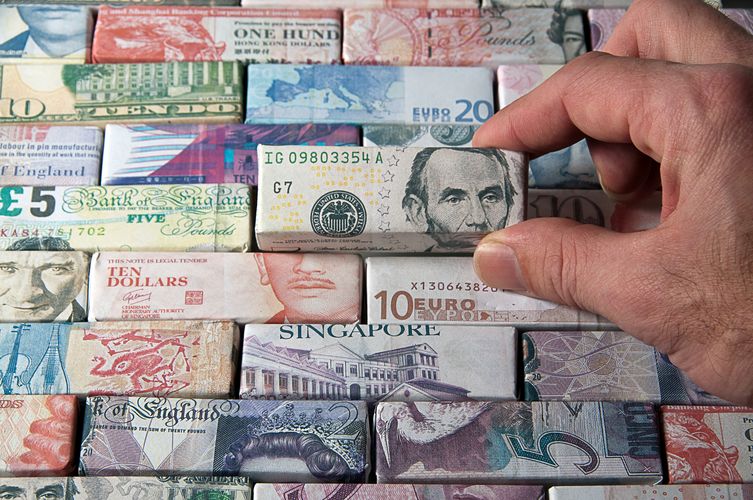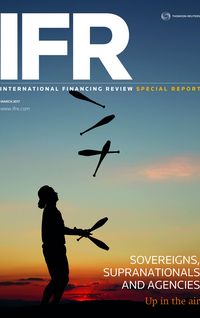The origins of the Asian Infrastructure Investment Bank are political but its entry into global infrastructure financing presents a welcome boost for Asia. Its earliest forays suggest that the AIIB is set to be a collaborative force with its multilateral development bank peers as well as with the private sector.
If the Asian Infrastructure Investment Bank had not existed, it might have been necessary to invent it. That sounds glib, but there can be no doubt that the AIIB presents a welcome shot in the arm for Asia’s infrastructure sector.
The region is in desperate need of plugging its infrastructure gap and the bank’s presence is seen as presenting the opportunity for multilateral lenders active in the region – principally the Asian Development Bank – to leverage their know-how and use of balance sheet.
The AIIB was conceived in 2014 by China’s president, Xi Jinping, and widely viewed as an attempt to stamp the country’s mark on development finance, where the World Bank and the International Monetary Fund have dominated the international multilateral development bank (MDB) scene since their founding at the end of the Second World War, while the Asian Development Bank has had MDB hegemony in Asia.
Operations commenced in January last year and as well as China, which effectively holds a casting vote over the bank’s strategy, the AIIB has been joined by Australia, the UK, Germany, Italy, the Philippines and South Korea.
The United States and Japan are notably absent as shareholders, again under the widespread perception that China is attempting with the organisation to break the old order of global finance established at the 1944 Bretton Woods conference during which the rules of the post-war international monetary system were drawn up.
“America and Japan spat the dummy when the AIIB was proposed by China. It may appear to be an attempt to break up the cosy Bretton Woods club and steer the argument towards China. Time will tell on that, but the best way those two countries could have impacted on the strategy of the AIIB was to be inside the tent rather than outside it,” said a Singapore-based project finance banker.
The initiative may indeed have jarred with those two countries but the earliest signs are that via the participation of the IFC and the ADB on the initial AIIB-originated loans, collaboration is going to be key to the newly minted bank’s activities going forward. And whatever the gripes may be in America and Japan about the bank’s existence, there can be little quarrel with its mission statement, given the pressing need for infrastructure development in Asia, which will require trillions of dollars of investment if the region’s fifty-year economic “miracle” is to remain in place.
“The AIIB was created to foster sustainable economic growth and development, as well as promote regional connectivity and cooperation, through investment in infrastructure and other productive sectors. One year into operation, we have made important progress in varying respects and have approved a lending programme of US$1.73bn,” said Pang Yee Ean, director of the bank’s investment department.
The AIIB has 30 founding countries in its ownership structure holding total capital stock of US$100bn, of which China is the majority shareholder via a US$29.78bn investment. This was topped up by US$50m in January 2016 as the contribution to a special fund.
Concerns mollified
Despite China’s dominance of the institution, its diverse ownership and eclectic staffing – many of the AIIB’s initial hires are veterans from the rather incestuous MDB sector – suggest it will be far from being a simple instrument of China’s growing geopolitical power.
“When the AIIB was created, critics feared that it would be used to serve only China’s national interests, with a risk of negatively impacting environmental and human rights standards. One year after its creation, this has not occurred,” said Pang.
Four of the AIIB’s initial loans were co-financed with the World Bank and the ADB. These include a US$216.5m loan to Indonesia to alleviate poverty in its slums, a US$165m power transmission project in Bangladesh, US$100m for the completion of a highway in Pakistan and US$27.5m for the upgrade of another highway in Tajikistan. Some US$1.2bn of infrastructure loans were approved by the end of the AIIB’s first year anniversary.
“We are off to a strong start, but now more than ever it is important for us to sharpen our focus on what it means to be a multilateral investment bank in the 21st century with a renewed focus on client service and responsiveness,” said Pang.
Despite the US’s publicly stated discomfort with the AIIB, most of its loans will be made in US dollars. Still, it seems likely that given the growing prominence of the Chinese renminbi as an international currency, loans in the Chinese unit will begin increasingly to feature in the bank’s lending activities. The AIIB’s president, Jin Liqun, has flagged the bank’s flexibility and stated that it will consider making loans in other currencies, including the renminbi and the euro.
“The AIIB’s 2017 annual meeting will be built around the theme of sustainable infrastructure and we are aiming to stimulate the conversation on how international organisations and policy-makers can partner with private sector financing to tackle the large infrastructure gap in Asia, all with a critical lens towards environmental protection and stewardship,” said Pang.
The bank’s second annual meeting will take place in Jeju in South Korea in June and will help underline China’s overwhelming leadership in sustainable infrastructure within the Asia-Pacific region and its attendant financing according to Green lending principles. That irony will not be lost on participants in the context of the Trump administration’s agnosticism towards climate change and its overt support of the fossil fuel industry.
Meanwhile, just over a year after commencing operations, the AIIB has invested in nine projects across Europe, Asia and the Middle East. And in a further sign that collaboration with its MDB peers is likely to form the centrepiece of its operations, the bank recently signed an International Swaps and Derivatives Association (ISDA) agreement with the IFC, which aims to enhance the two MDB’s ability to invest in infrastructure projects in Asia.
“This agreement facilitates AIIB’s ability to support our clients’ projects and help promote local currency bond issuance,” said Soren Elbech, the AIIB’s treasurer.
”Multilateral financial institutions, like AIIB and IFC, have a much larger risk-bearing capacity compared with private sector companies in the countries where we lend. It therefore makes a lot of sense for us to create financing solutions that significantly reduce our clients’ risk of losses from such currency risks.”
The agreement will provide the two banks with the ability to hedge currency and interest rate risk with each other, and effectively represents a leveraged enhancement of the balance sheets of both lenders.
“Via its collaboration with other co-financers and MDBs, the AIIB has quickly worked up the learning curve, co-invested with other MDBs and has been totally transparent on the background investigations conducted regarding environment and human rights,” said Mark Austen, CEO of the Asia Securities Industry and Financial Markets Association (ASIFMA) in Hong Kong.
“This has definitely helped the AIIB to remove suspicions of ill-dealing in controversial locations or of negative impact on human rights and environment. Lastly, after one year of existence, the AIIB doesn’t appear to be biased toward Chinese political and economic interests.”
OBOR to the fore
Nevertheless, the “Chinese” ambiance of the AIIB is inescapable, and no more so than in the case of China’s “One Belt One Road” (OBOR) initiative, which aims to link China to its neighbours and trading blocs in the Middle East and Europe in a project that hopes to revive the ancient “Silk Road” trading route which hooked China up to trade with the West.
OBOR is one of the largest over-arching infrastructure projects to have been conceived and dwarfs the post-War Marshall Plan to rebuild Europe by a ratio of around 10:1 at inflation-adjusted pricing. The project is seen as likely to be something of a watershed in terms of MDB involvement in infrastructure financing.
“MDBs are involved in many infrastructure projects in Asia-Pacific, by providing funding, guarantees and credit enhancement. At ASIFMA, we strongly believe that a good way to free up the initial funding for those infrastructure projects and to help deepen domestic capital markets would be the issuance of infrastructure project bonds at the end of the construction phase of the project once it is operating,” said Austen.
“Those bonds would help achieve several objectives: they would help to free up initial project funding, which could be used to fund other projects and develop a strong project pipeline; they would help attract investors, both domestic and international, attracted by new investment opportunities; and, finally, they would help deepen domestic capital markets.”
While regarded as an imperfect instrument for financing versus traditional non-recourse project finance – matching capital to project milestones and tailoring cashflow is not possible with a conventional project finance bond – project bonds look set for a bonanza.
“Silk Road” project bonds are fast becoming a discrete asset class, with a devoted settlement system in the works, and there is growing demand for the product among Asia’s deepening institutional investor base (principally life insurers and pension funds looking to match long-term liabilities with assets).
As the Asian project bond market gathers momentum, there is a commensurate agreement that much of the paper generated in the asset class must conform to internationally accepted standards of sustainable finance.
“For MDBs, such as AIIB, lending for projects and countries which may bear some sensitivity requires a strong methodology and standards. For MDBs such as AIIB, it is extremely important to conduct strong and adequate due diligence process and transparent background checks before lending to parties or countries. This is vital to avoid any suspicion of corruption, money laundering or ill-doing,” said Austen.
To see the digital version of this roundtable, please click here
To purchase printed copies or a PDF of this report, please email gloria.balbastro@tr.com



